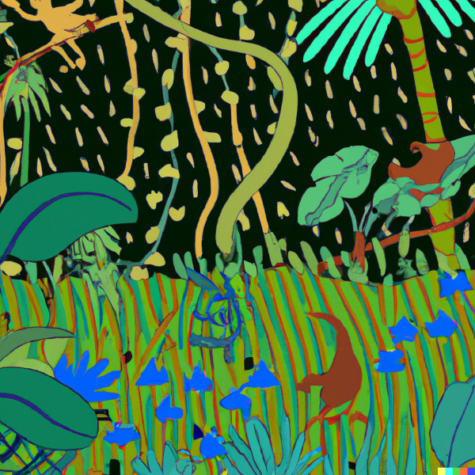When it turned out that four siblings, aged 1 to 13, had survived in the jungles of Colombia for 40 days after their plane crashed, killing all the adults on board (including their mom), the world was dumbstruck with awe. How could kids that young be that resourceful?
“My responses is: ‘They do this routinely,’” says anthropologist David Lancy, author of “Child Helpers: A Multidisciplinary Perspective,” and a number of other books about kids in other cultures. “They look after their brothers and sisters, including babies. They hunt. They forage. They build shelters.”
They put us, in short, to shame.
CRASH AND LEARN
The children – Lesly (13), Soleiny (9), Tien (4) and Cristin, who had his first birthday during this ordeal – were traveling with their mother, uncle, and pilot on a small plane when its engine died. It crashed into one of the most remote regions of the Amazon jungle on May 1.
Their mother survived for four days. After that, the kids were on their own in a forest filled with poisonous plants, venomous snakes, ravenous jaguars and about 16 hours a day of rain.
And that’s not to mention drug traffickers, and militias. It was fear of the latter that led the children’s father to flee the region earlier, and then send for them. Manuel Ranoque told reporters he was afraid a militia would recruit the children. He sent their mom money for the plane trip.
When searchers reached the plane 16 days after it crashed, they assumed all aboard had died, until one said: Wait. Where are the bodies of the children?
NO LIGHT
When the team realized the kids had survived, the Colombian government organized a massive hunt. It began with members of the military, but soon they were joined by dozens and, eventually, about 200 local indigenous people. Normally, the two groups are mortal enemies. On this mission, more than 300 worked as a team.
The search was made so difficult by the density of the forest canopy, which lets in little light. Add to that the near constant rain, and it was almost impossible to follow the few tracks, or yell loud enough for the kids to hear. The searchers played tapes of the children’s grandmother telling the kids that adults were looking for them. And they dropped 10,000 leaflets giving the kids encouragement and advice.
It’s unclear whether they needed any.
THANK GOODNESS FOR HAIR TIES
By all accounts, 13-year-old Lesly took charge. She was raised by her grandmother in a remote village, and learned to cook at age 8. When her parents were off working, she often took care of her siblings.
After the kids ate a sack of casava flour they salvaged from the plane, Lesly led them off to hunt and gather. They took with them some clothes, a tarp, mosquito netting, a flashlight, and a music box.
In the jungle, they collected water in a soda bottle, and ate avichure (something like passion fruit) and milpesos (which supposedly taste like avocados). They hid in tree trunks to avoid predators, or sometimes Lesley made shelters from branches held together with hair ties.
Searchers traversed over 900 miles looking for the children, at one point passing less than 200 feet from them. In the end, the kids were found about four miles from the crash.
MEANWHILE, IN THE UNITED STATES…
When children grow up in indigenous cultures, far from modern anything, they learn the skills of life “by practice, observation, paying attention, listening, not being the center of attention, and being under an obligation from birth to help out and aspire to be like the adults,” says anthropologist Lancy.
Meanwhile, in our country, we legally prevent kids from developing that resourcefulness. Our authorities investigate and sometimes even arrest parents who let their children walk half a mile, or spend six minutes alone in the library.
This wild over-estimation of danger and underestimation of kids goes so deep that the American Academy of Pediatricians put out a white paper a few years ago warning that:
“Young children have developmental limitations that prevent them from being safe pedestrians.”
A LESSON FROM THE JUNGLE
Thanks to all those “limitations” the AAP “recommends that children should not be unsupervised pedestrians before 10 years of age, except in limited situations.”
I’m guessing those limited situations do not include 40 days unsupervised in the Amazon jungle.




2 Comments
Well said. Adults in our culture teach young persons that they are incompetent in all things, rather than growing in competence and responsibility as they mature. No wonder they believe it.
What a terrible state our culture is in these days. I feel sorry for people raising kids now.. If you wish to raise resilient children you need to work around authorities, not with them. I wonder if there is a Western country where you can raise children in a productive way.